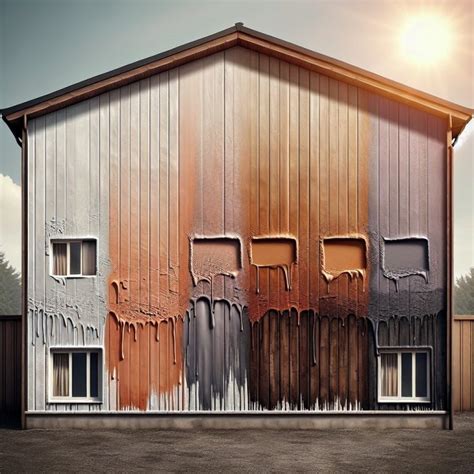Exterior Paint Drying Time: From Wet to Wow!
Choosing the perfect exterior paint color is exciting, but the process doesn't end with the final brushstroke. Understanding exterior paint drying time is crucial for a long-lasting, beautiful finish. This comprehensive guide will walk you through everything you need to know, from factors influencing drying speed to troubleshooting common issues.
What Affects Exterior Paint Drying Time?
Several factors play a significant role in how long your exterior paint takes to dry. Knowing these will help you manage expectations and prevent problems.
Type of Paint:
- Oil-based paints: These traditionally take much longer to dry, often requiring 24 hours or more between coats and several days for complete curing. The longer drying time is often offset by their durability.
- Water-based (latex) paints: These are the most common choice for exterior projects, drying significantly faster—usually a few hours between coats. However, complete curing can still take several days.
- Acrylic paints: A subset of water-based paints, acrylics are known for their fast drying time and excellent adhesion.
Weather Conditions:
This is arguably the most important factor.
- Temperature: Warmer temperatures (ideally between 60-80°F) accelerate drying. Cold temperatures significantly slow the process.
- Humidity: High humidity hinders drying. The moisture in the air competes with the paint's evaporation process.
- Sunlight: Direct sunlight can speed up drying but can also cause the paint to dry too quickly, potentially leading to a less smooth finish. Cloudy days offer more controlled drying.
- Wind: A gentle breeze can help with evaporation, speeding up drying time. However, strong winds can blow dust and debris onto the wet paint.
Surface Preparation:
Proper surface preparation is paramount. A clean, dry surface free of mildew, loose paint, and dirt is essential for optimal adhesion and faster drying.
Paint Thickness:
Thick coats take longer to dry than thin, even coats. Multiple thin coats are always preferable to one thick coat for a smoother, more durable finish.
Type of Surface:
Porous surfaces like wood absorb paint more quickly, potentially shortening drying time but possibly requiring more coats. Non-porous surfaces like metal or previously painted surfaces may take slightly longer.
How Long Does Exterior Paint Typically Take to Dry?
This is a tricky question without specifying the conditions mentioned above. However, here's a general guideline:
- Between Coats: Water-based paints usually need a few hours (2-4) to dry to the touch before applying another coat. Oil-based paints might need 6-8 hours or even longer.
- Full Cure: This refers to the time it takes for the paint to fully harden and achieve its maximum durability and weather resistance. This can range from a few days to several weeks, depending on the factors discussed earlier.
How Long Until I Can Recoat?
Always follow the manufacturer's instructions printed on the paint can. This information is specific to the paint's formulation and will provide the most accurate recoating timeframe. Generally, allow the paint to dry completely to the touch before applying another coat. Rushing the process can lead to peeling or cracking.
What Happens if My Exterior Paint Takes Too Long to Dry?
If your exterior paint is drying significantly slower than expected, consider the weather conditions. High humidity or cold temperatures are the most likely culprits. You may need to wait longer for ideal conditions or use a paint additive designed to accelerate drying time (always check compatibility with your paint type).
Can I speed up the drying process?
While you can't force the drying process, you can optimize conditions to make it faster. This includes choosing the right time of day (warmer, less humid periods), ensuring good ventilation, and using fans to circulate air gently.
When is the Exterior Paint Fully Cured?
Full curing is achieved when the paint has hardened completely and reached its maximum durability and water resistance. This usually takes several days to several weeks, depending on the type of paint, weather conditions, and surface type. Avoid washing or heavy contact with the painted surface during this curing period.
By understanding these factors and following the manufacturer’s instructions carefully, you'll ensure your exterior painting project looks fantastic and lasts for years to come. Remember, patience is key to a professional-looking finish!

